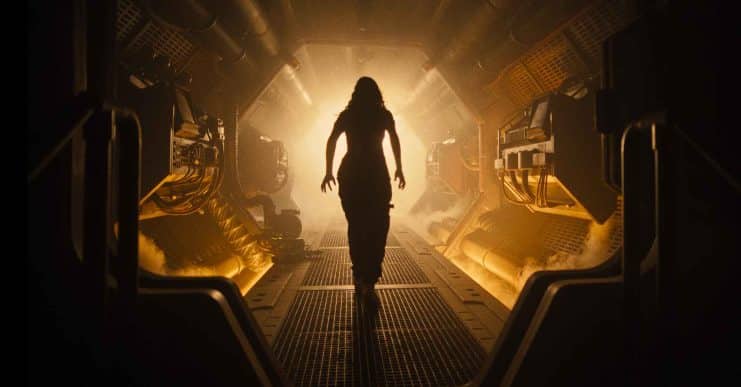Alien: Romulus revived an old acquaintance of the franchise, but not without generating controversy. Director Fede Álvarez and producer Ridley Scott reveal how AI technology was instrumental in an unexpected cameo
Alien: Romulus has caused a stir among fans for several reasons, but one of the most discussed is the return of the android Ash, the iconic character played by the late Ian Holm in the original 1979 film. This return was achieved through the use of advanced technologiesincluding artificial intelligencea decision that both Fede Álvarez and Ridley Scott defend, while acknowledging that the result was not perfect.
Álvarez explained in an interview how they decided to bring this beloved character back to lifemaking it clear from the outset that they were not attempting to reproduce Holm’s acting talent, but simply to capture her likeness. We didn’t try to do the impossible, that is, to reproduce that person’s talent as an actor, because it’s another character. The only thing they have in common is the resemblance, said the director.
The mix of old and new
To bring this new android to life, which resembles Ash but with his own background and characteristics, Álvarez and his team opted for a combination of animatronics and CGI facial enhancements. 80-90% was done by the puppeteers, depending on the shot, so that the animatronics had a little more life. he detailed. However, it was It was the integration of artificial intelligence technology that really captured the public’s attention and sparked debate.
Ridley Scott praised the idea of including an android reminiscent of Ashmentioning that it was a fitting tribute to Ian Holm’s legacy. Ian Holm suddenly appearing as a robot on board the company was a great idea, Scott commented. However, he also acknowledged that The execution, especially in terms of visual effects, was below expectations.
Artificial Intelligence and the Future of Cinema
The use of artificial intelligence in films is not a new topic, but it remains controversial, especially when it comes to recreating deceased actors. Álvarez defended his decisionstressing that, despite the technology involved, the process still requires a large amount of human labor. We had an actor on set, who worked on the dialogue. It’s not like we skipped hiring an actor. Doing it this way requires a team of so many people and so many components to pull it off that it’s never really going to be cost effective, the director clarified.

However, Not all aspects of this courageous choice were well received.Viewers commented that the android, called Tower in the film he was quite distracting when he was on screen, especially during dialogue scenes. The lack of polish in the visual effects was evidentand this has affected the immersion of some fans in the story.
Whenever the android Rook was on screen, it was very distracting because the visual effects work didn’t look good, especially when the character was speaking, admitted one critic, expressing a frustration shared by many.
A step forward, but with setbacks
The return of an emblematic character like Ash, even if only in appearance, That was a risk Alien: Romulus he was willing to take. THE The intention behind the use of AI and other effects was certainly admirable, but the execution fell short of expectations. This decision has put her at the center of the debate the role of technology in modern cinema and to what extent it can or should be used to recreate elements of the past.

Despite the criticism, Alien: Romulus It was generally well received, with many praising its atmosphere and narrative. But this incident with the android Rook reminds us that technology, while powerful, cannot always replace the magic of human talent and the subtlety it brings.
Ash Cameo Alien: Romulus It may not have been all that fans expected.but it certainly gave us a lot to talk about. And in a franchise that has always been at the forefront of cinematic innovation, perhaps this is just one step in the continued evolution of how cinema explores the future while honoring its past.
